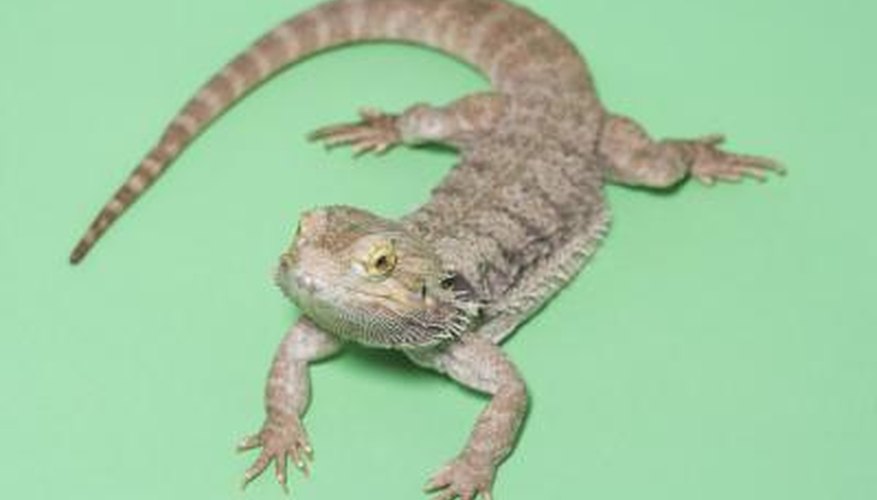Bearded dragons, also known as "beardies", are a popular type of lizard commonly sold in pet stores. The average lifespan of a bearded dragon is between 5 and 8 years. However, some have been known to live up to 12 years if kept well-fed and in a stable environment. It can be difficult to tell the age of a bearded dragon, as many factors can intervene with size. A nutritional diet of live bugs and vegetables, clean housing, adequate exercise and proper temperature control can greatly increase the size and lifespan of the bearded dragon.
Determine if the bearded dragon is a juvenile or adult by referring to size. Hatchlings will typically be 3 to 4 inches at birth. Between 1 and 3 months, bearded dragons will average 6 to 12 inches. From 4 to 6 months, they can grow 12 to 17 inches. Adult dragons grow to an average of 15 to 24 inches in length.
- Bearded dragons, also known as "beardies", are a popular type of lizard commonly sold in pet stores.
- Between 1 and 3 months, bearded dragons will average 6 to 12 inches.
Examine the bearded dragon to differentiate between male and female. By 1 year of age, young dragons will be sexually mature while most are mature by 8 months. When sexually mature, it will be easier to identify gender. Male dragons have larger, rounded pores located under the thigh. Male dragons will also have a thicker tail than a female. If these signs of gender are easily seen, owners can ensure that their pet is sexually mature and at least 8 months of age.
- Examine the bearded dragon to differentiate between male and female.
- Male dragons will also have a thicker tail than a female.
Find out the history of the bearded dragon. This is not always possible if the dragon was purchased from an unknown breeder. However, bearded dragons that receive poor care can appear smaller than average. This is commonly seen in pet shops where overcrowded aquariums result in lack of growing room and minimal food supply.
TIP
There is no definite way to determine the exact age of a bearded dragon without knowing its hatch day. Teeth and other common indicators of age do not portray age in lizards, as it does in many other animals. Size is the only indicator of the average age of a dragon, but size can greatly vary.
